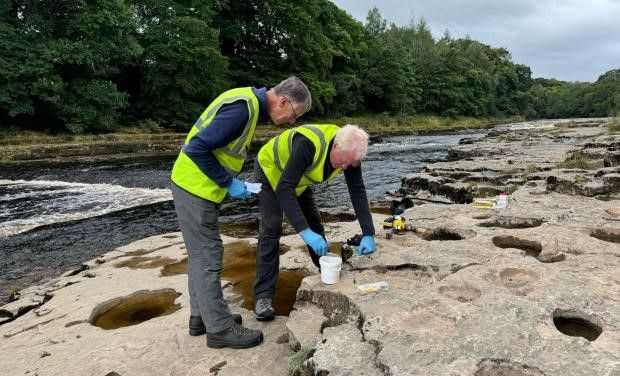Ure Water
Surveying the River Ure and its tributaries
Project Overview
On the 21st August and 9th October 2024, ten teams of citizen scientists took water samples from 45 sites along the full length of the River Ure and some of its major tributaries at approximately the same time on the same day. The samples were analysed by ALS Ltd for the faecal bacteria E. coli as well as nutrient and chemical analysis.
The activity was organised by Yorkshire Dales Rivers Trust with support from Stop Ure Pollution (SUP). We would like to thank the many volunteers who assisted with the sampling and Yorkshire Water for funding the analysis.
What we found:
- Physico-Chemical Parameters: The results indicated low levels of pollutants during the low flow sampling in August, with higher levels observed in October due to increased river flow and surface runoff. Phosphate and nitrogen concentrations were within acceptable limits, except for certain sites like the Tutt and Skell tributaries, which showed elevated levels.
- E.coli concentrations: These were higher in October compared to August, likely due to storm discharges and agricultural runoff. Several sites, including potential bathing sites at Aysgarth Falls and Masham had E.coli levels above the threshold for safe bathing.
- Pollution Sources: The study identified significant pollution sources, including agricultural runoff, septic tanks, and storm discharges from sewage treatment works. The Tutt tributary showed particularly high levels of pollutants, warranting further investigation.
Our recommendations:
- Further Investigations: Conduct detailed investigations on the Tutt and Skell tributaries to identify pollution sources and implement mitigation measures.
- Septic Tank Management: Improve data on septic tank locations and promote proper maintenance to reduce nutrient and bacterial pollution.
- Designated Bathing Water Status: Pursue designated bathing water status for sections of the River Ure to ensure regular monitoring and public awareness of water quality.
- Microbial Source Tracing: Implement microbial source tracing to distinguish between human and livestock faecal bacteria and target pollution sources effectively.
What happens next:
The River Ure water quality monitoring project has provided important insights into the health of the river and its major tributaries. While overall river water quality remains within acceptable limits, specific areas have been identified that require further investigation and targeted pollution mitigation measures. Addressing these hotspots is essential to protect freshwater ecosystems, maintain safe conditions for recreational use and support long-term river restoration and environmental protection efforts.
In 2026 we'll be rolling out Riverfly monitoring throughout the whole of the River Ure to further monitor its water quality.
Image: SUP volunteers collecting samples at Aysgarth Middle Falls (c. PIP POINTON)
